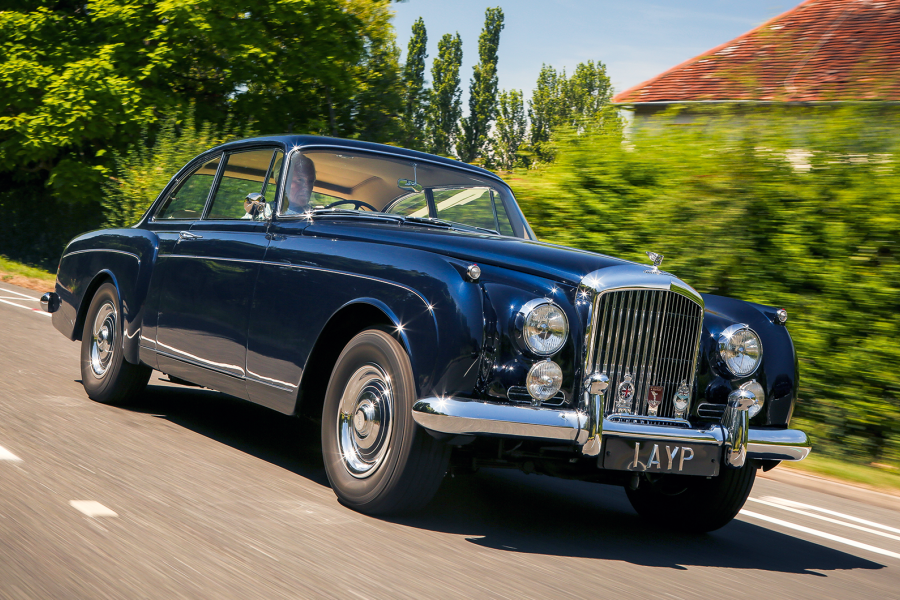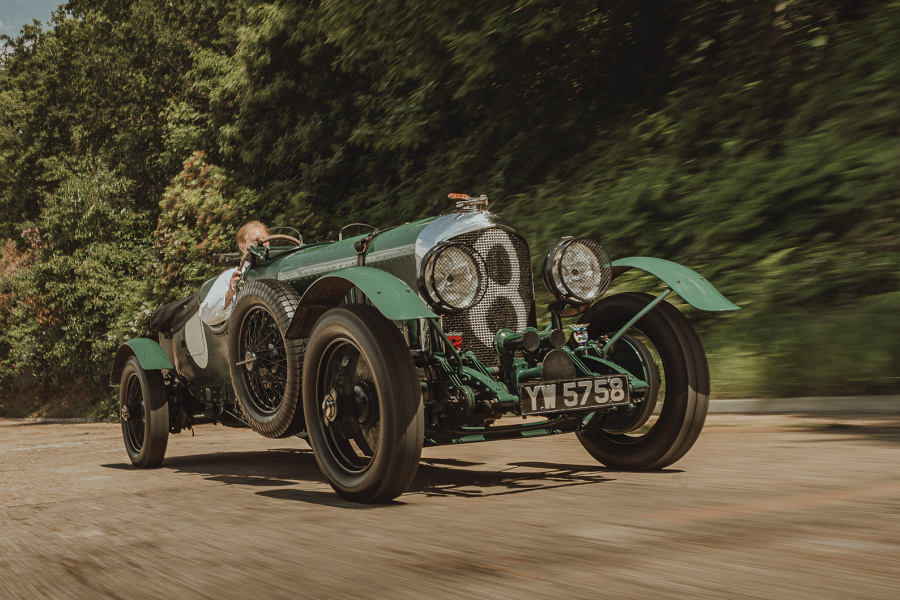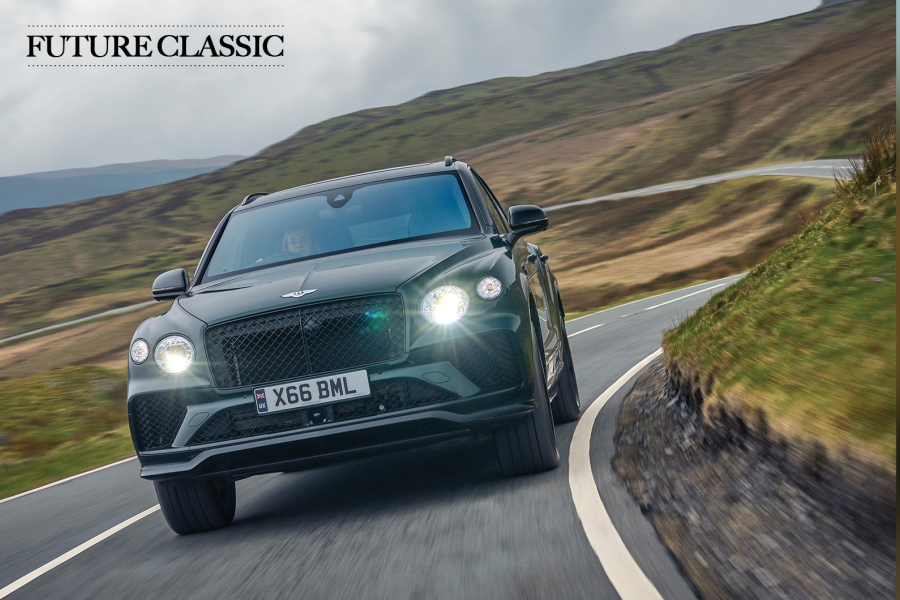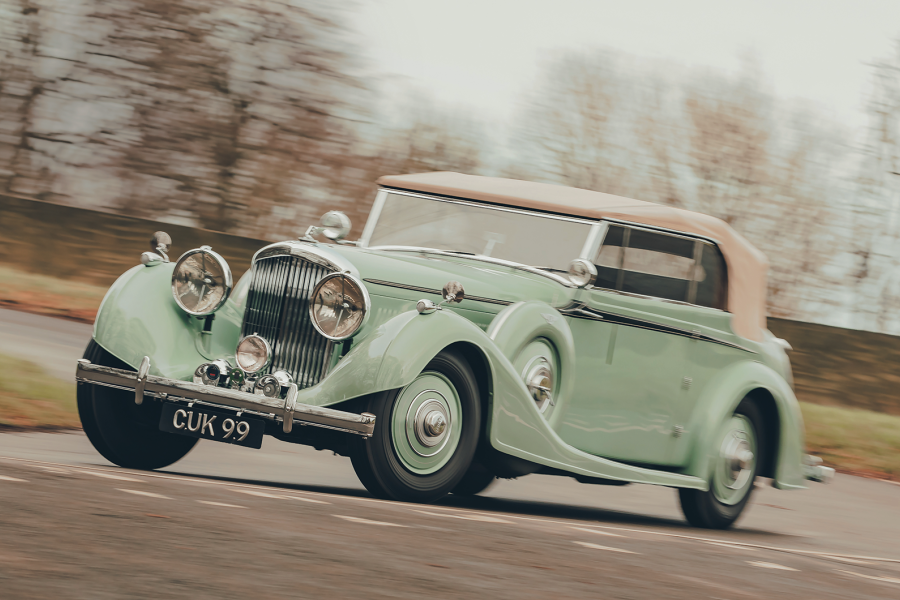The Continental R is blistering off the mark – especially if you use the ‘Sport’ button on the gearknob to re-map the gearchange – but feels relatively more impressive surging from 100 to 120mph than from zero to 60.
Cruising at a vaguely legal trot you are merely conscious of a velvety burble that conjures a mental image of giant pistons loafing softly in huge bores.
In some ways the car’s cornering power is as impressive as its urge, even if it does come at the expense of that fidgety low-speed ride. It doesn’t pretend to be a big-boy’s go-kart, and you wield its substantial power and weight with reference to the laws of physics, yet fast cornering is effortless and seemingly roll-free.
You can urge the Continental R along a B-road at a pace that does not compute with the dimensions of the car. Once again it feels majestic and wears its heft lightly, a strange mix of ballet dancer and power lifter.
Naturally, with silky automatic gears and well-weighted, delightfully precise but not twitchy power steering, it requires much less physical and mental effort to drive than the now almost 70-year-old R-type.
Both cars offer refined driving experiences
Yet still you get a smoother ride overall in the older car, which obviously rolls rather more while tending to understeer slightly ponderously in low-speed corners.
On the other hand it feels well balanced and safe in longer, faster ones, and is a more interesting drive simply because it gives you more to think about. It’s very much a car for wide-open spaces, getting rather stuffy inside at low speed as well as being a bugger to manoeuvre and park with its huge rear blindspot.
As you leave the town behind, the sense of that long stride, that feeling of effortless locomotion rather than mere motoring is common to both.
With its emollient but very ‘manual’ steering and high-biting (if not especially heavy) clutch, the R-type feels the well-oiled, obsessively refined piece of engineering it is: a collection of entirely conventional technical concepts, even by 1950s standards, honed to as near to perfection as humanly possible. That it is so good to drive seems almost like a bonus feature in such a voluptuously graceful car.
This was the height of the post-war British coachbuilder’s art and nobody could seriously dispute its beauty, particularly from the rear. Not exotic exactly, but in many ways as much a ‘supercar’ of its time as as any Mercedes ‘Gullwing’.
Price-wise, there’s no comparison, with the R-type going for more than 20 times what the Continental R does
The R-type’s 1952 price-tag (with taxes) of £7000 is the equivalent of £200k in today’s money, making it relatively even more expensive than the 1993 car. For that you got the fastest true four-seater in the world, with a level of superiority over its contemporaries that the Crewe brand (or perhaps any other make) never achieved again. All things considered, it probably was the best car in the world.
Four decades later, the Continental R faced not only a much tougher set of rivals, but also a world in which the all-round competence of the ordinary family saloon was increasing at a relentless pace, yet it was still hard to think of another car that was so good at so many things and looked so good doing them.
I remember seeing my first one in the metal in 1991 (at its UK launch) and thinking that if I had to own one modern car, this would be it. Certainly the supposed big coupé ‘rivals’ from the likes of Ferrari, BMW and Mercedes now look like increasingly callow imposters. As for the Aston Martin Virage, Heffernan and Greenley’s other claim to fame, the less said the better.
Subsequent personal exposure to what I consider to be the last of the proper Continentals has done nothing to tarnish the image or dull my admiration; they are just as fast, capable and beautifully built as they appear to be.
Even if they never quite assume the ‘chariot of the gods’ status (or seven figure price-tag) of the R-type, logic dictates that Continental Rs are probably as cheap as they will ever be and can only rise in value. Buy one, enjoy it, use it and you can be pretty sure your money will be safe. Look after it and it will look after you.
“Cars should be bought because you love them and want to drive them, but sometimes their looks don’t match the reality,” concludes Hillier. “In this case, though, they really do.”
Images: James Mann. Thanks to Giles Crickmay at Frank Dale & Stepsons; Hillier Hill
FACTFILES
BENTLEY R-TYPE CONTINENTAL
- Sold/number built 1952-’55/208
- Construction aluminium body, steel frame and separate steel chassis
- Engine iron-block, alloy-head, inlet-over-exhaust 4566/4887cc straight-six, with twin SU carburettors
- Max power 158-173bhp @ 4500rpm
- Max torque n/a
- Transmission four-speed manual or four-speed automatic, RWD
- Suspension: front independent, by coil springs, wishbones, anti-roll bar rear live axle, semi-elliptic leaf springs; adjustable lever-arm dampers all round
- Steering cam and roller
- Brakes 121/4in (311mm) drums, with mechanical servo
- Length 17ft 21/8in (5235mm)
- Width 5ft 111/2in (1816mm)
- Height 5ft 3in (1600mm)
- Wheelbase 10ft (3048mm)
- Weight 3739Ib (1696kg)
- 0-60mph 13.5 secs
- Top speed 120mph
- Mpg 16.1
- Price new £7300
- Price now From £750,000
BENTLEY CONTINENTAL R
- Sold/number built 1991-2002/1236
- Construction steel monocoque
- Engine all-alloy, ohv 6750cc V8, with Garrett T04B turbo and fuel injection
- Max power 325bhp @ 4000rpm
- Max torque 450lb ft @ 2000rpm
- Transmission four-speed automatic, RWD
- Suspension independent, at front by wishbones, anti-roll bar rear semi-trailing arms; coil springs, electronic dampers f/r (self-levelling at rear)
- Steering power-assisted rack and pinion
- Brakes 11in (279mm) vented front, 11in (277mm) solid rear discs, with servo and ABS
- Length 17ft 61/4in (5342mm)
- Width 6ft 9in (2058mm)
- Height 4ft 91/2in (1462mm)
- Wheelbase 9ft 103/4in (3016mm)
- Weight 5295lb (2402kg)
- 0-60mph 6.6 secs
- Top speed 145mph
- Mpg 13
- Price new £187,354 (’95)
- Price now from £30,000
READ MORE
Bentley at 100: eight cut-price classics from Crewe
Bentley at 100: Driving the first ‘Blower’ Bentley
Martin Buckley
Senior Contributor, Classic & Sports Car

























